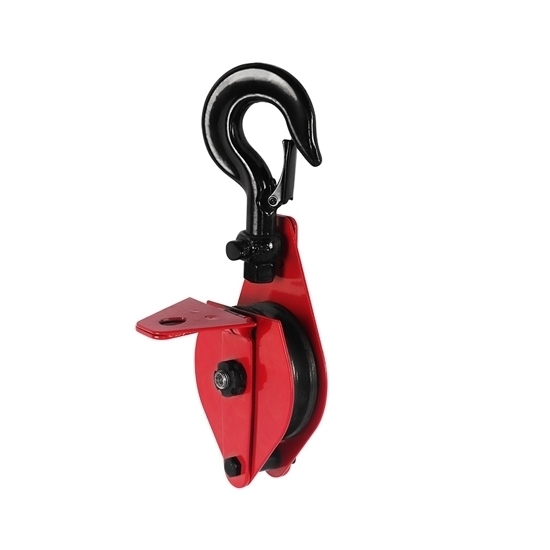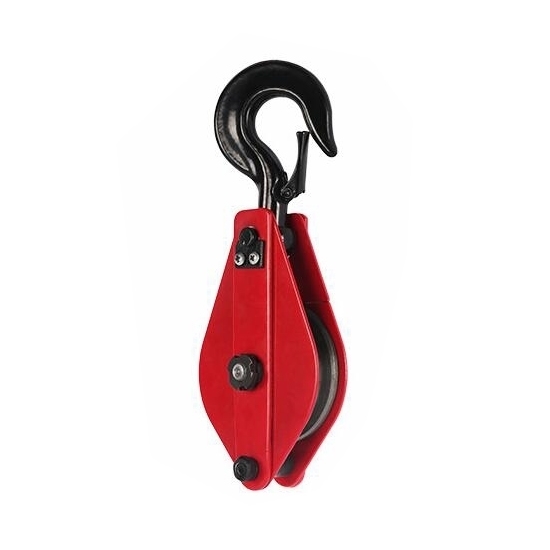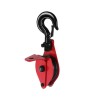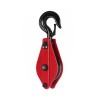



- Stock: In Stock
- Model: RDDLZ-BLOCK-2T
- Weight: 1.00
- SKU: RDDLZ-BLOCK-2T
Available Options
A 2 ton single sheave snatch block is a simple yet powerful mechanical device used in various industries and applications. It consists of a pulley enclosed within a block or housing with a hinged opening. Its compact size and portability make it an indispensable tool for overcoming obstacles and maximizing mechanical advantage in demanding situations.
Specification
| Model | RDDLZ-SL-HQGK1-2 | |
| Rated Load Capacity (WLL) | 2 Ton | |
| Experimental Load | 3.26 Ton | |
| Wire Rope Diameter | Suitable | 11mm |
| Max. | 14mm | |
| Weight | 5.78kg | |
Dimensions
| H | B | Lmax | D | 0 |
| 405mm | 152mm | 88mm | 45mm | ≥32mm |
Precautions for use
- Overloading is strictly prohibited.
- The snatch block should be inspected regularly, and the period should not exceed 3 months.
- The snatch block pulley is disassembled for maintenance, and the parts should be cleaned with gasoline.
- The snatch block must not be beaten during loading and unloading to prevent deformation of parts.
- When the snatch block is not used for a long time, it should be cleaned and lubricated.
Tips: What is the difference between pulley block and snatch block?
A pulley block and a snatch block are both types of mechanical devices used to change the direction or increase the mechanical advantage of a rope or cable. However, there are some key differences between the two.
A pulley block, also known as a fixed block, consists of a grooved wheel mounted on a fixed axle. It is used to change the direction of a rope or cable by providing a smooth surface for it to run over. Pulley blocks are typically stationary and do not move during operation.
On the other hand, a snatch block, also called a movable block, is designed to move along the rope or cable as it is being used. It has a side plate that opens, allowing the rope to be placed inside the block. This feature makes it easier to rig the snatch block in a variety of locations. Snatch blocks are commonly used in scenarios where the load needs to be redirected or where increased mechanical advantage is required.
All in all, while both pulley blocks and snatch blocks serve similar purposes, the main difference lies in their mobility. Pulley blocks are fixed and primarily used for changing direction, whereas snatch blocks are movable and provide additional flexibility in rigging and load handling.
